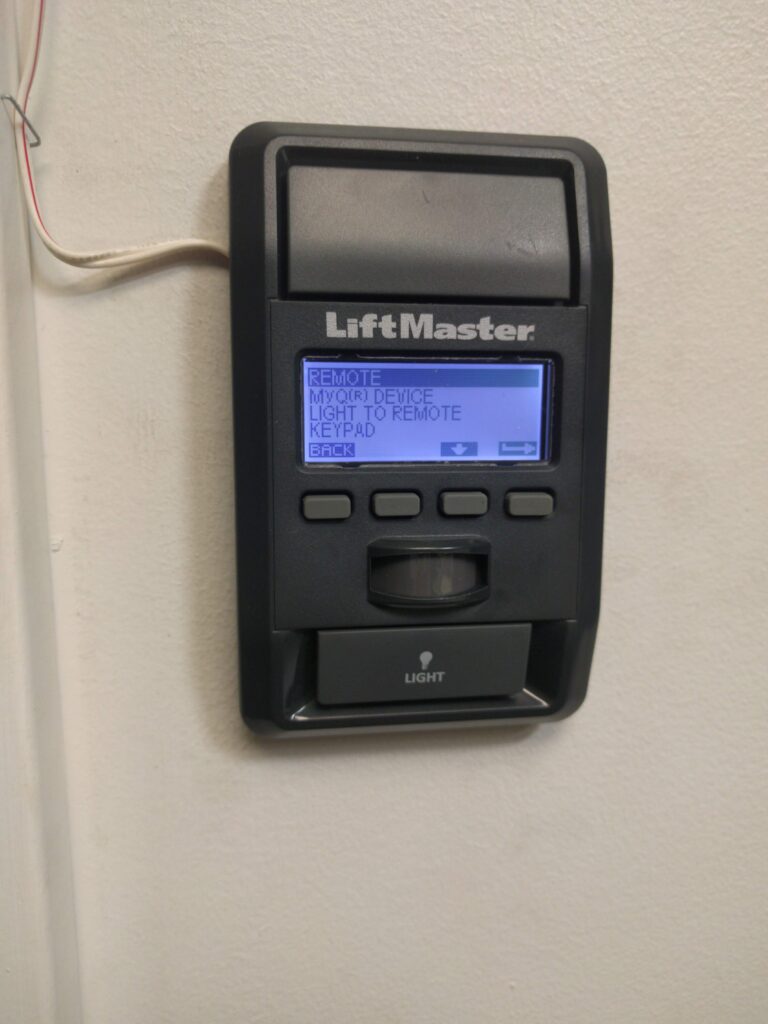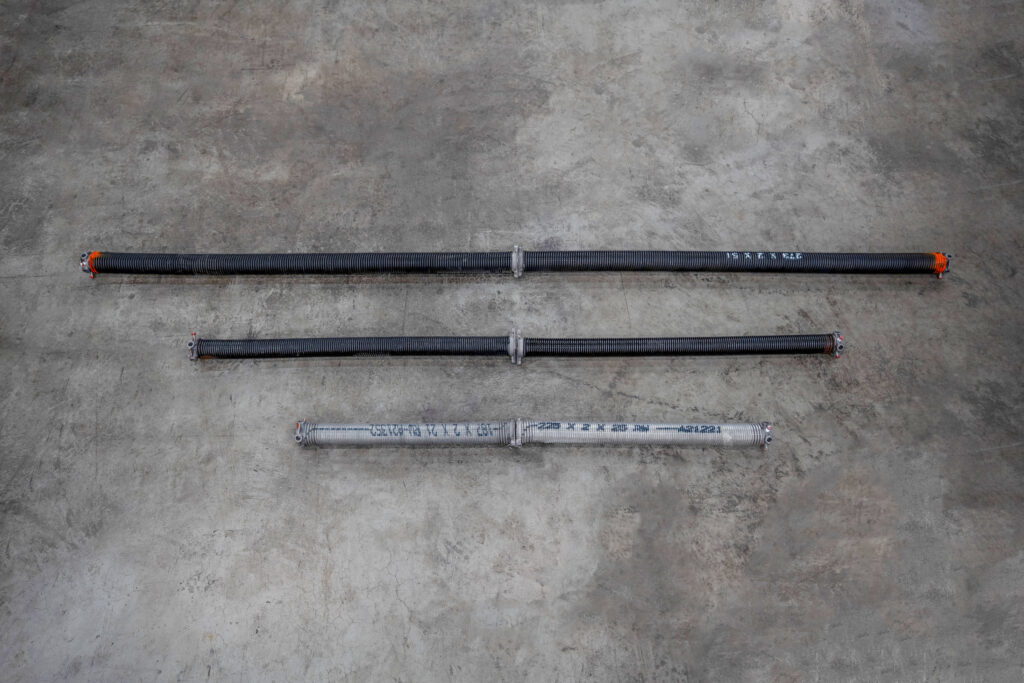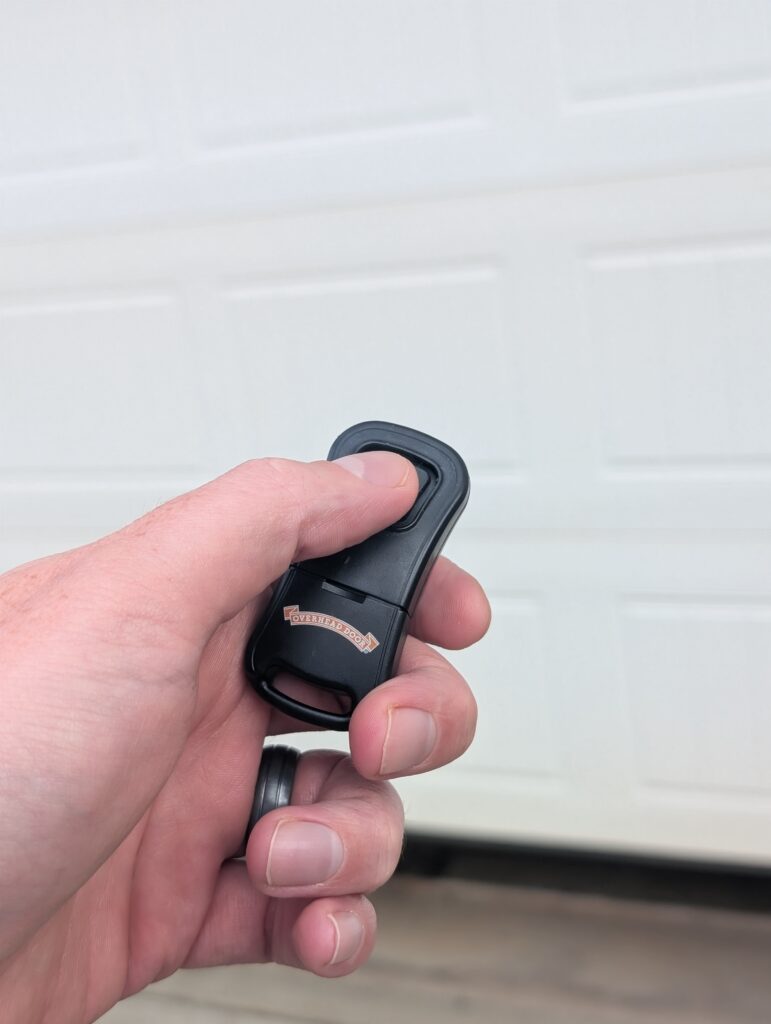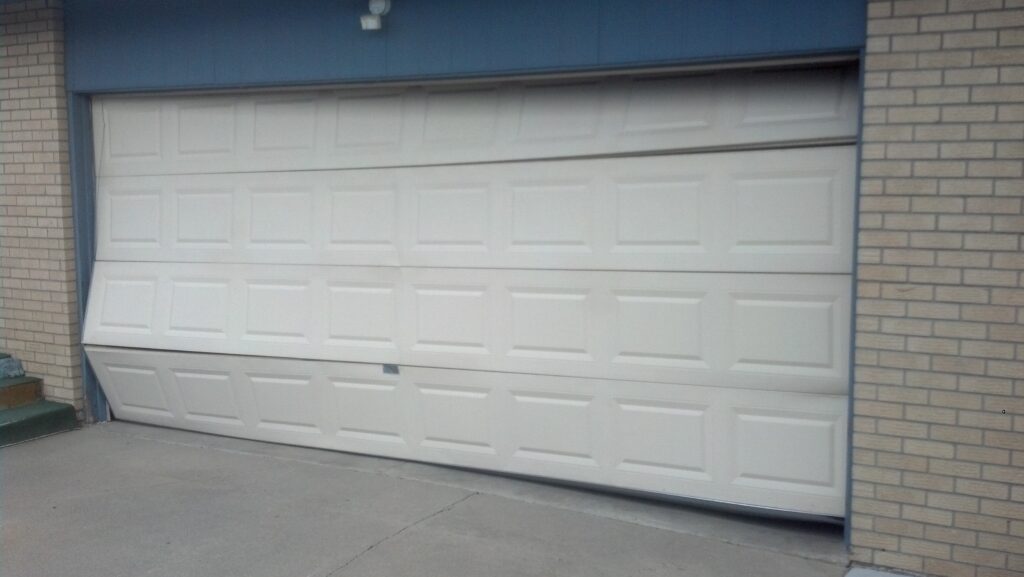Garage Door Parts: Identification, Function & Replacement
For many people, the garage door is their home’s main entry and exit point. Garage doors work tirelessly in the background, often for decades, but there’s an intricate network of garage door parts that need to work in tandem to keep things functioning properly. If one fails, the entire unit could fail. There’s no shortage of options when it comes to garage door parts and accessories.
or
Fast & Free quotes from garage door companies in your area
Garage Door Opener and Components
The garage door opener and its components are the heart of your system, finding the best garage door opener for your home is important. Most units hang from the middle of the ceiling, and all of them contain a circuit board. The circuit board acts as the brain of the garage door opener, sending and receiving signals between remote controls and wall consoles and helping to detect obstructions. Garage door openers need a motor and a drive mechanism to lift and lower the door.
Essential Garage Door Spring Components
Garage door springs help counterbalance the door’s weight by tightening when it closes and loosening when it opens. There are two main types:
- Torsion springs: A popular choice for residential applications, torsion springs are tightly wound coils located above the garage door that store and release energy to open and close it.
- Extension springs: Extension springs run parallel to the horizontal tracks on either side of the garage door, expanding and contracting to raise or lower it.
Depending on the type of springs you have, key additional components include the tube shaft, center bearing plate and winding cone for torsion springs, and pulleys, cables, and hardware for extension springs.
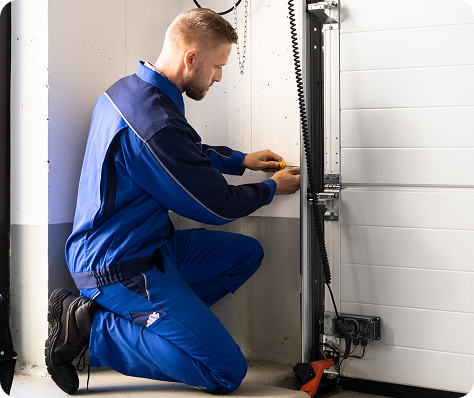

Garage Door Track System Components
Your garage door’s track system is a series of vertical and horizontal channels that hold the rollers in place, allowing the door to open and close seamlessly. The industry-standard width for household tracks is 2 inches. Some of the track system’s main components include:
- Vertical tracks: The metal channels that run bottom-to-top from the track brackets to the splice plates on either side of the door.
- Horizontal tracks: The channels that run horizontally to the ground, holding the door in place when open.
- End bearing plates: Designed for use with torsion-spring systems, end bearing plates secure the track system to the garage door header and/or horizontal track. Supported end bearing plates secure both the header and horizontal track. Unsupported end bearing plates secure only the horizontal track.
- Brackets: Jamb brackets secure the vertical tracks to the frame of the garage, flag brackets secure the vertical and horizontal tracks where they meet, and reinforcement brackets strengthen the connection between the top section of the door and the opening arm, reducing wear and tear over the years.
Expert Tip>>> Garage Door Track Replacement Cost
Garage Door Rollers and Hinges
Garage door rollers are small wheels, typically 2-inches in diameter, that fit within the tracks and allow the door to smoothly raise and lower. Hinges serve many purposes, including providing overall stability to the unit and allowing the panels to transition from a vertical to horizontal position. Each has multiple options.
- Nylon rollers: Nylon rollers are quiet, durable, and a top upgrade pick for residential homes.
- Steel rollers: Known for their exceptional strength and long-term reliability, steel rollers are typically best suited for commercial use.
- Bearing rollers: There are two main types of bearing rollers – sealed and unsealed. They contain ball bearings to help reduce friction and noise, and are one of the most popular choices for homeowners.
- Standard hinges: Standard center hinges are installed along the length of the door to provide support and connect the panels together. End hinges are installed toward the left and right ends of the garage door panels and hold the rollers in place.
- Heavy-duty hinges: These thick-gauge hinges are made from the most durable materials and often feature powder coating and a galvanized finish to protect against the elements.
Garage Door Cables & Pulleys
Both torsion- and extension-spring garage door systems use a series of cables and pulleys to lift and lower the door and to keep the components in place.
- Lifting cables: As the name implies, the lifting cables are responsible for lifting and lowering the garage door.
- Safety cables: Also known as retaining cables, safety cables are only used with extension spring units. They act as a failsafe if the primary cable breaks and help to prevent potential injury.
- Cable drums: Cable drums are used in torsion spring systems to wind the doors up and down.
- Sheave pulleys: For use with extension spring units, sheave pulleys are also responsible for raising and lowering the garage door.
In addition to these core components, garage door cable and pulley systems also utilize various cable attachments and tensioners.
Learn more about replacing garage door cables.
Garage Door Panels and Sections
Garage door panels are the horizontal sections connected by hinges that form the door itself. There are dozens of options to choose from in terms of style, materials and price point. Steel panels are the most popular right now among homeowners, but other options include wood, fiberglass, and aluminum.
If you live in a colder climate, insulated panels might be worth looking into to help increase the energy efficiency of your home. Many garage doors have window inserts, which also come in a wide variety of styles. Window inserts can be replaced if they’re damaged, and replacement panel sections are also available if needed.

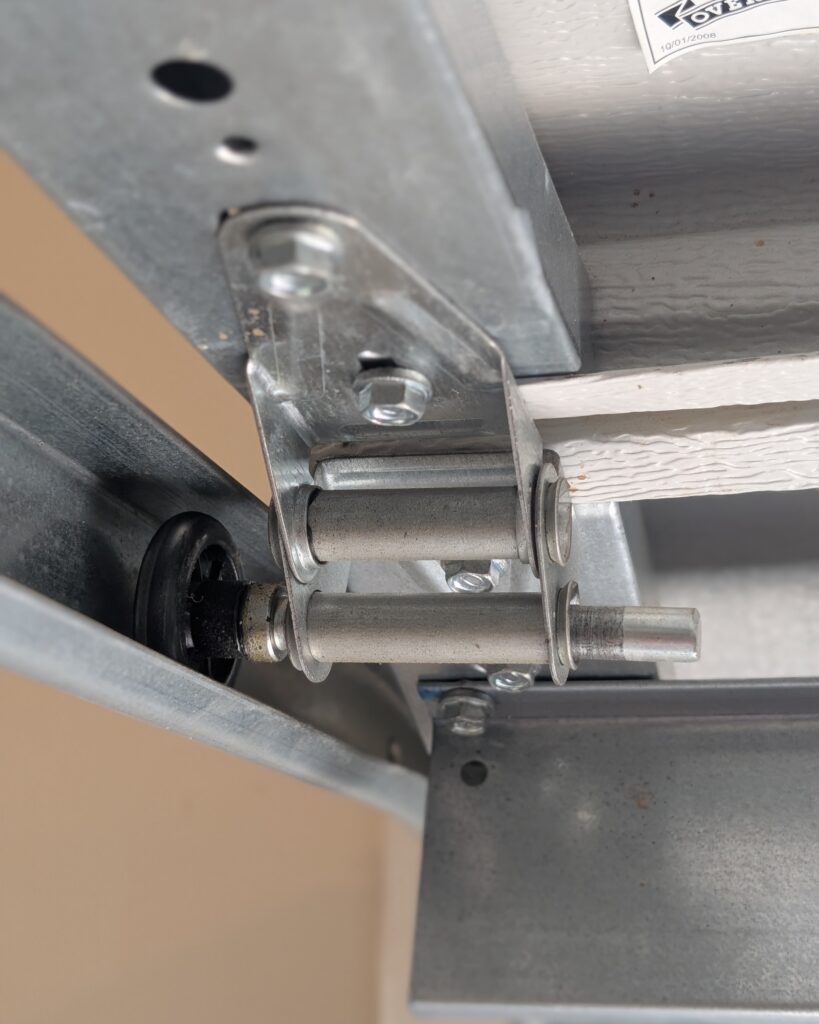
Hardware and Fasteners for Garage Doors
Garage doors are held together and strengthened by dozens of hardware components. Lag bolts and screws secure anything from hinges and tracks to rollers and panels. Track bolts and hinge bolts secure their namesake components, while spring fasteners are designed to hold torsion springs in place.
Garage Door Weatherproofing Parts
Weatherproofing your garage is crucial both for energy efficiency and prolonging the life of the system. If they’re not already pre-installed, consider weatherproofing your door with garage door seals:
- Bottom, top and side seals: Strips of rubber, vinyl or other material designed to keep rain and debris out of your garage.
- Threshold seals: In addition to or instead of the manufacturer’s seals, some homeowners choose to add weatherstripping, threshold seals, or draft stoppers at the base of their garage door.
- Insulation: Installing an installation kit to the inside of your garage door panels is a simple, budget-friendly way to increase energy efficiency and regulate the temperature in your garage. Find the best garage door insulation kit.
Safety and Security Parts
Though their purpose is simple, garage doors are made up of a complex network of heavy, potentially dangerous components and materials. Several products are available to help prevent injury and system malfunction.
- Safety sensors: Infrared sensors positioned toward the bottom of the door. If the infrared beam senses an obstruction, the garage door will remain open.
- Emergency release cord: The emergency release cord hangs from the center of the garage door and is often. If there’s an electrical or other type of failure, pulling the cord will turn the motor-powered door into a manual door.
- Security reinforcements: Locks, latches, motion detectors, and reinforcement bars can all be added to your door to help prevent theft and wind damage.
Common Questions About Garage Door Repair Parts
Some frequently asked questions about garage door parts include:
Tips and Expert Advice for Your Garage
Stay informed with expert advice on garage door maintenance, garage door service, garage door replacement, and upgrades. Explore our blog for guides, troubleshooting tips, and more.
